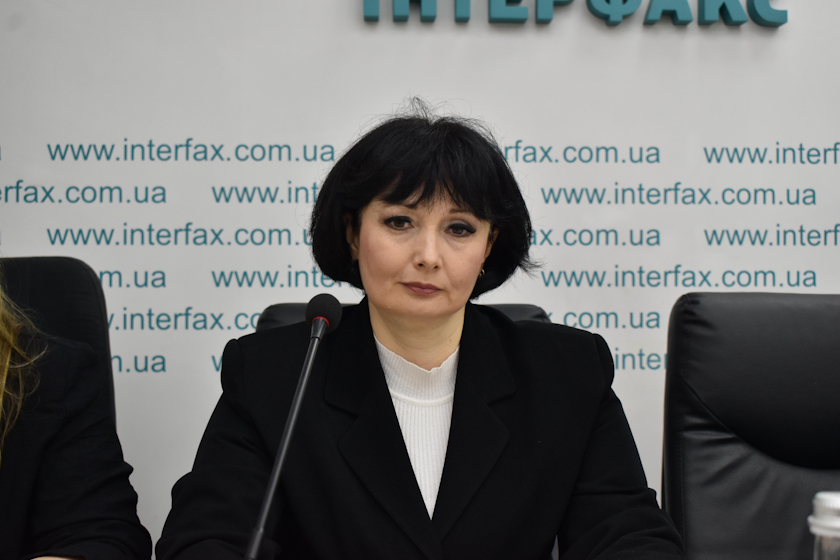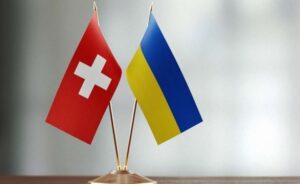
UKRNAFTA gas stations’ “points of invincibility” will assist Ukrainians during power outages.
As a result of Russia’s massive missile and drone attack on energy facilities, a significant number of consumers in Kyiv, Kyiv, Donetsk, Dnipropetrovsk, Cherkasy, Chernihiv, Kharkiv, Sumy, Poltava, and Odesa regions are without power. To stabilize the situation, emergency power cuts are currently in place in these regions. Energy companies are currently working to restore a stable power supply.
All 663 of our gas stations continue to operate — you can refuel your car there, as well as purchase fuel for your generator.
360 gas stations are operating in “resilience mode”: additional generators have been installed there, and you can:
• warm up;
• drink hot tea or coffee;
• charge your phone;
• access the internet.
Take care of yourself and your loved ones!
Addresses of points of resilience at UKRNAFTA gas stations.
JSC “Ukrnafta” is the largest oil production company in Ukraine and operates the largest national gas station network, UKRNAFTA. In 2024, the company took over the management of Glusco’s assets. In 2025, it completed an agreement with Shell Overseas Investments BV to purchase the Shell network in Ukraine. In total, it operates 663 gas stations.
The company is implementing a comprehensive program to restore operations and upgrade the format of its network of gas stations. Since February 2023, it has been issuing its own fuel vouchers and NAFTAKarta cards, which are sold to legal entities and individuals through Ukrnafta-Postach LLC.
The largest shareholder of Ukrnafta is Naftogaz of Ukraine with a 50%+1 share.
In November 2022, the Supreme Commander-in-Chief of the Armed Forces of Ukraine decided to transfer the company’s corporate rights, which belonged to private owners and are currently managed by the Ministry of Defense, to the state.
Source: https://interfax.com.ua/news/press-release/1111372.html

Imports of chilled and frozen pork (UKT ZED 0203) exceeded 6,000 tons in September, which is 31% more than a month earlier and is the highest figure since January 2022, according to the Ukrainian Pig Farmers Association (ASU).
“Unlike last year, foreign supplies in 2025 picked up significantly in response to weaker domestic pork supply and higher prices, and in the second half of the year, average monthly imports of pork from abroad reached 2022 levels. At the same time, importers did not exceed the record figure of 6.6 thousand tons recorded in January 2022,” the industry association noted.
According to analysts, the stimulus for increased import activity was both high prices for Ukrainian pork and the exhaustion of quotas for duty-free pork supplies from the EU.
“Since this year’s seasonal decline in domestic pork supply coincided with the effects of a reduction in the country’s pig population, prices for Ukrainian pork are significantly higher and have remained at a consistently high level for a long time. In contrast, the average customs value of imported pork in September fell to $2.56 per kg (-2.2% compared to August). Since the vast majority of such products come from EU countries, the exhaustion of quotas for duty-free imports encouraged some operators to build up stocks of products before the forced “price increase” due to customs tariffs,” the experts explained.
The ASU stated that in the first three quarters of 2025, Ukraine imported 20.8 thousand tons of chilled and frozen pork (UKT ZED 0203) worth $53.2 million, of which only 142 tons were imported from Canada, while the rest of the consignments were imported from the EU. Therefore, further imports of pork from there will be subject to import duties: chilled — 12%, frozen — 10%.
At the same time, a number of importers are convinced that duties will not stop the flow of pork as long as it is economically justified.
“European pork prices have been weakening since the beginning of July and fell by 6% in September due to seasonal changes, increased domestic supply, and difficulties with foreign trade, in particular, China’s introduction of 62% duties on pork imports from EU countries. Therefore, according to some operators, the price pressure from these factors may offset the aforementioned increase in import costs,” the association emphasized.
At the same time, other players are convinced that against the backdrop of a significant reduction in domestic pork supply in Ukraine compared to last year, the pressure on prices from imports and the impact on the market will not be too critical. Thus, if the pace of supplies remains at the level of the third quarter of this year, the total annual imports of pork will not exceed 35,000 tons. In this case, it will account for no more than 5-6% of the estimated domestic supply of pork, which is a quarter less than in 2022 and 15% less than in 2021. Therefore, the vast majority of pork on the domestic market continues to be supplied by Ukrainian producers.
Higher prices on the domestic pork market somewhat slowed down the shipment of Ukrainian pork abroad in August and September, but the total export volume for the first nine months of the year exceeded 2,000 tons, amounting to almost $6.2 million. The key trading destinations remain Hong Kong, the UAE, Bahrain, and Malaysia, but businesses and government agencies are actively working together to open up a number of new markets, including the Philippines, Vietnam, Singapore, South Korea, and others,” summarized the Ukrainian Pig Farmers Association.

Experts in education, law, and food safety emphasize that compliance with HACCP standards in schools and kindergartens is mandatory and directly affects children’s health. Marina Day, PhD in Law, Associate Professor, CEO of E-Science Space, and Advisor to the Center for Strategic Innovation and Progressive Development, emphasized that the legal requirements for implementing the HACCP system are enshrined in a number of legislative acts.
“The professional development of educational institution administrators and the implementation of the HACCP system is not a right, but an obligation under the law. Every school principal is, in fact, a food market operator and bears personal responsibility for the safety of children,” she stressed at a press conference at the Interfax-Ukraine agency.
The expert also noted that, according to Article 325 of the Criminal Code of Ukraine, violations of sanitary standards can have serious consequences, including criminal liability for heads of educational institutions.
“Judicial practice shows that even the absence of properly completed HACCP logs or internal control reports can be grounds for fines and disciplinary measures,” Day noted.
In turn, HACCP implementation expert Maria Naboka pointed out that effective implementation of the system is impossible without a diagnostic audit.
“You should start not with paperwork, but with an analysis of the actual state of the educational institution. Only after an audit can you understand what risks exist and what changes need to be made,” she said.
According to the expert, one of the main problems remains the insufficient training of personnel.
“Training is a discipline. Without understanding the HACCP system, even the best equipment will not ensure food safety,” added Maria Naboka.

Lilia Voronyuk, head of the Reyon law firm, emphasized that the responsibility for violating food safety requirements for educational institution managers is real and multi-level.
“If a child at school or kindergarten is poisoned, this can have not only administrative but also criminal consequences. Today, every head of an educational institution must realize that the HACCP system is not just a set of papers, but a legal mechanism that protects both them and the children,” she said at a press conference at the Interfax-Ukraine agency.
According to Voronyuk, the HACCP system not only helps prevent food poisoning but also minimizes the risk of fines and reputational damage.
“When an educational institution properly implements the system, it actually creates a protective shield for itself: everything is documented, all risks are tracked, and all processes are under control. This not only avoids sanctions but also increases parents’ trust,” she added.
According to her, between 2022 and 2024 alone, more than 900 legal entities received fines totaling over UAH 30 million for violating HACCP requirements, and during this period, 190 court decisions were issued for non-compliance with food safety legislation.
Yaroslav Filatov, a representative of Protech IT Ukraine, emphasized the importance of technical modernization of school kitchens.
“Today, only a small number of schools have modern professional equipment that meets HACCP requirements. Many of the upgrades began thanks to the initiative of Ukraine’s first lady, but after the start of full-scale war, the pace slowed significantly,” he said.
Filatov advised school administrators to conduct regular equipment audits in order to use budget funds rationally and avoid unnecessary purchases.
Lilia Voronyuk, head of the Rayvon law firm, reminded that administrative, civil, and even criminal penalties may apply not only to suppliers but also to educational institutions that have not implemented the HACCP system.

“Today, responsibility is not just a legal term, but a reality that protects the lives and health of children,” she emphasized.
In turn, Olena Udalova, candidate of pedagogical sciences and research associate at the Institute for the Modernization of Educational Content of the Ministry of Education and Science of Ukraine, presented a joint educational program for the professional development of teachers, “HACCP System in Educational Institutions.”
“We have created a training program that teaches not only theory but also practice—document development, case studies, and situation modeling. The main goal is to foster a culture of food safety in educational institutions,” she said.
Participants in the press conference also presented the “Food Advocacy” initiative, a platform that brings together lawyers, technologists, and auditors to help educational institutions and businesses implement the HACCP system (https://edu.centresipd.com/free-online-haccp-school).
“Safe food is not a choice, but a duty. And we are the ones who stand up for it,” the presentation of the initiative says.
The HACCP (Hazard Analysis and Critical Control Point) system is an internationally recognized risk management methodology aimed at ensuring food safety. According to Ukrainian law, all educational institutions that have food service facilities or work with food suppliers are required to implement the HACCP system.
Source: https://interfax.com.ua/news/press-conference/1111177.html
Day, Filatov, Food Advocacy, HACCP, Воронюк, Набока, Удалова

Switzerland will restrict the granting of temporary protection status to Ukrainian refugees from western regions of Ukraine from November 1, 2025, according to SRF television. The decision was made by the Swiss Federal Council as part of a review of the policy on granting S status, which has been in effect for Ukrainian citizens since March 2022. Under the new rules, the state will distinguish between regions of Ukraine where it is considered safe to return and those where it is still unsafe to stay.
According to the government’s decision, the return of Ukrainians is considered acceptable in the following regions: Volyn, Rivne, Lviv, Ternopil, Zakarpattia, Ivano-Frankivsk, and Chernivtsi.
The new restrictions will take effect on November 1, 2025, and will only apply to new applications. Ukrainians who have already been granted protection status are not affected by the new rules.
The Federal Council emphasized that, overall, the temporary protection regime S remains in place, as “a lasting stabilization of the situation in Ukraine does not appear realistic in the medium term.” However, the country’s parliament had previously obliged the government to establish a more differentiated approach depending on the applicants’ regions of origin.
The State Secretariat for Migration (SEM) will continue to consider each application individually. In cases where the applicant’s origin indicates a region recognized as safe, the application for protection will be rejected.
If the return of a particular person proves legally impossible or individually unacceptable, they will be allowed to remain in Switzerland temporarily.
Ukrainians who are unable to obtain S protection status under the new rules will still be able to apply for asylum or leave for other European countries.
The Federal Council also confirmed that the final abolition of the S protection regime is not planned before March 2027.
Experts note that Bern’s decision reflects Switzerland’s gradual transition to the selective application of protection status, focused on the level of security in specific regions of Ukraine and reducing the burden on the national migration system.
According to SRF, among Ukrainians currently in Switzerland under S status, about 10% come from regions recognized by the government as safe.
Forecast of dynamics of changes in Ukrainian GDP in % for 2022-2025 in relation to previous period

Source: Open4Business.com.ua

Imports of goods from Ukraine in January-September 2025 amounted to $60.1 billion in monetary terms, which is 17.4% higher than in the same period of 2024, while exports decreased by 3.1% to $29.5 billion, according to the State Customs Service (SCS).
“At the same time, taxable imports amounted to $45.9 billion, which is 76% of the total volume of imported goods. The tax burden per 1 kg of taxable imports in January-September 2025 was $0.52/kg,” the agency’s Telegram channel reported on Wednesday.
Traditionally, China imported the most goods to Ukraine – $13.3 billion, followed by Poland – $5.7 billion, and Germany – $4.8 billion.
Ukrainian goods were exported mainly to Poland – $3.7 billion, Turkey – $2.1 billion, and Germany – $1.8 billion.
Of the total volume of goods imported into the country in January-September 2025, 69% of the categories were machinery, equipment, and transport – $23.8 billion (with customs clearance, UAH 148.3 billion, or 29% of customs payments, was paid to the budget), chemical industry products – $9.4 billion (72.9 billion hryvnia paid to the budget, or 14% of revenues), fuel and energy – $7.6 billion (146.6 billion hryvnia paid, accounting for 29% of customs payments).
According to the State Customs Service, the top three most exported Ukrainian goods were food products – $16.2 billion, metals and metal products – $3.4 billion, and machinery, equipment, and transport – $2.8 billion.
“In the first nine months of 2025, UAH 641.9 million was paid to the budget during customs clearance of exports of goods subject to export duties,” the service concluded.